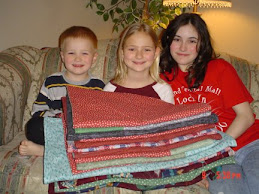Photo 1: Your piece of fabric and no it doesn't have to square, retangle .... whatever size you have. This piece is approximately 1/2 yard.
 Photo 2: Fold piece over in order to get a true bias. Now I press mine to get the fold.
Photo 2: Fold piece over in order to get a true bias. Now I press mine to get the fold.
Photo 3: Cut on the fold using a ruler and rotary cutter.
Photo 4: Take the right piece you cut off above and placed it next to the left edge. You're going to sew the two pieces together.

Photo 5: Sew the two edges together. I like to use a 3/8" seam but use whatever you like.

Photo 6: Press the seam open.

Photo 7: Now on each edge (top/bottom) draw a 1/4" line.

Photo 8: I like for my bias to be 2 1/2". I draw using my ruler from the edge 2 1/2" across the fabric.

Photo 9:

Photo 10: When I get to the right edge of the piece I cut away the excess.

Photo 11: At the top left edge I number the 2 1/2" markings starting with ZERO .... number all the way across. Now the bottom left edge I start the number with ONE ... number all the way across.

Photo 12: Matching the numbers of the top edge and the bottom edge (one to one, two to two) I pin.

Photo 13: The sew on the original line you mark in photo #7. You now have a tube.

Photo 14: Press that seam open ...

Photo 15:

Photo 16: Place the tube over your arm, using scissors cut on the lines you drew in photo 8.

Photo 17

Photo 18: You have a bunch of bias binding done in the round.

Photo 19: Take your binding to the ironing board and press

Photo 20: My almost 1/2 yard fabric yielded 15 1/2 yard of bias binding. YIPPEEEEEEE Feel free to ask questions. I suggest that you print out Shelley's instructions
Feel free to ask questions. I suggest that you print out Shelley's instructions
DISCLAIMER: The photos are mine BUT the instructions I used belong to a friend, Shelley. Check out her website.

Photo 5: Sew the two edges together. I like to use a 3/8" seam but use whatever you like.

Photo 6: Press the seam open.

Photo 7: Now on each edge (top/bottom) draw a 1/4" line.

Photo 8: I like for my bias to be 2 1/2". I draw using my ruler from the edge 2 1/2" across the fabric.

Photo 9:

Photo 10: When I get to the right edge of the piece I cut away the excess.

Photo 11: At the top left edge I number the 2 1/2" markings starting with ZERO .... number all the way across. Now the bottom left edge I start the number with ONE ... number all the way across.

Photo 12: Matching the numbers of the top edge and the bottom edge (one to one, two to two) I pin.

Photo 13: The sew on the original line you mark in photo #7. You now have a tube.

Photo 14: Press that seam open ...

Photo 15:

Photo 16: Place the tube over your arm, using scissors cut on the lines you drew in photo 8.

Photo 17

Photo 18: You have a bunch of bias binding done in the round.

Photo 19: Take your binding to the ironing board and press

Photo 20: My almost 1/2 yard fabric yielded 15 1/2 yard of bias binding. YIPPEEEEEEE
 Feel free to ask questions. I suggest that you print out Shelley's instructions
Feel free to ask questions. I suggest that you print out Shelley's instructionsDISCLAIMER: The photos are mine BUT the instructions I used belong to a friend, Shelley. Check out her website.









5 comments:
I love Shelley's tutorials. I use her binding ending instructions all the time and it comes out perfect every time.
Crispy
Wow amazing! I've never seen this method before. Thanks for sharing.
Sandy, I do this method, also. BUT, I am lazy. I do NOT draw the lines. I just measure over the 2-1/2" (my normal size for binding), and sew it into a tube. Then, I use my 24" ruler and cut the strips 2-1/2" wide. See ya, bgraham
I have used this method many times and it works great, but I saw a magazine article the other day, where instead of drawing the lines, you go ahead and cut them with your rotary cutter, all except for about 3/4 inch on each end of the fabric. Then sew it together just like your instructions. All you have to do then is to use your scissors to cut the small section at the seam. I press my seam open before cutting. I have saved myself the extra step of trying to mark the fabric, but I still have nice straight lines using the ruler to make my 2 1/2 inch cuts.
Barb
This method is great!
HUGE thanks to you and Shelley Rodgers for this.
i needed your photos to understand it properly.
The numbering of lines idea is simply genius and solved what was a huge headache for me!
Post a Comment